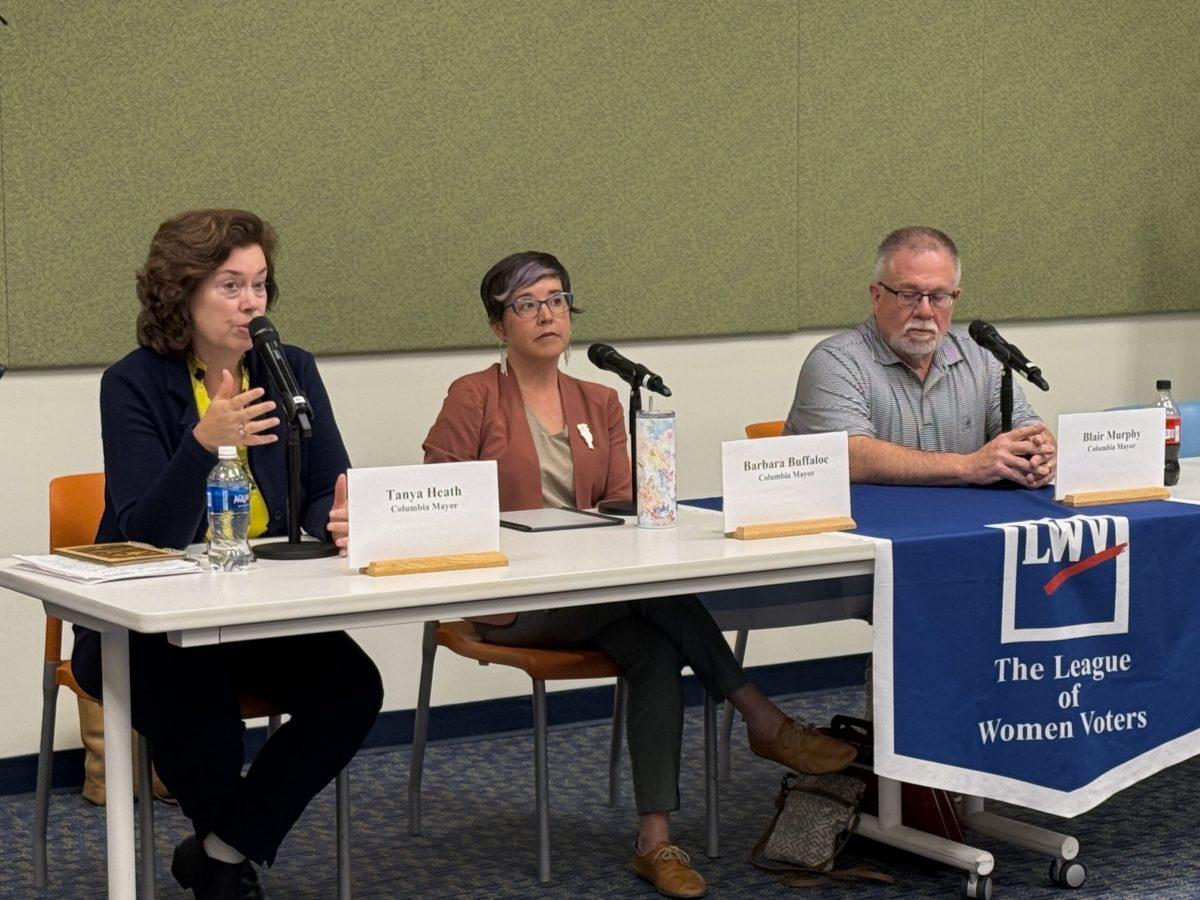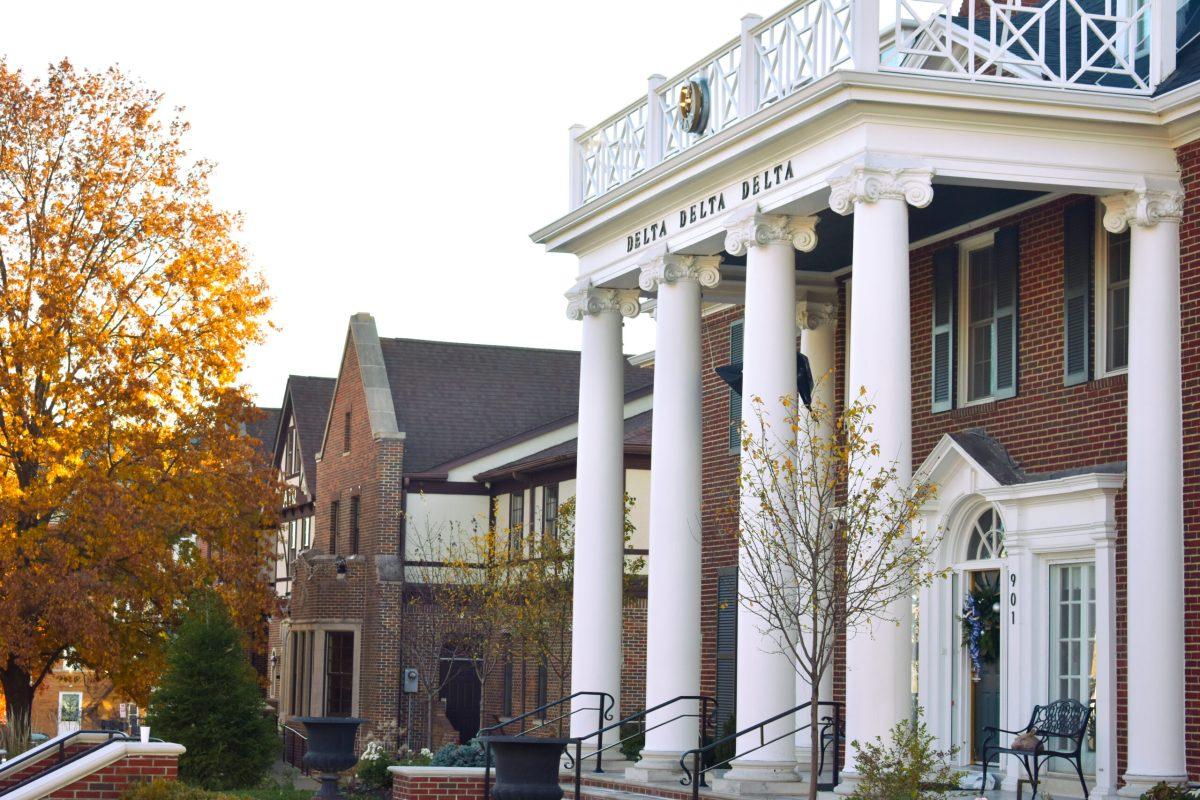One week of preparation and 1,700 pounds of sand and soil were devoted to MU graduate student Trudy Rogers-Denham’s “Residuum,” an exhibit that broke down the illusive nature of domesticity.
The George Caleb Bingham Gallery, divided into two rooms for the occasion, played host to two wall-to-wall displays of the same trompe l’oeil style of sand stenciling, sprinkled deceptively into leaf and paisley rug patterns so convincing that it was difficult to accept it was only dirt on the floor.
“Cover Up,” the first display in the gallery, and Rogers-Denham’s political statement, consisted of two rows of five rugs sprinkled neatly on cardboard platforms on the tile floor. As you first walk in you are nearly forced to step on the “rug” nearest the door, as there’s no sign or barrier, and the illusion is highly realistic. The effect is unnerving.
“I like that it’s making people uncomfortable,” Rogers-Denham said. “And it should.”
The exhibit noticeably divides visitors. Some are intimidated by how exposed and vulnerable the artwork seems — a light breeze might scatter the dust — and they warily tiptoe around it. Others immediately see that it’s just sitting there out in the open and want to get close — even touch it. It’s a trick that Rogers-Denham says identifies those who wish to preserve the status quo and those who seek the truth behind it.
Although it’s an impressive optical illusion by itself, “Residuum” carries an important message about how we represent situations.
“It’s a political statement,” Rogers-Denham said. “The dust we might have once swept under the rug has now become ornamental.”
It’s the sin of spin illustrated in dirt.
“Meeting,” the second display in “Residuum,” is a wall-to-wall rug of sand and soil, with two chairs innocuously facing each other in the middle and a single light coming down between them. If you felt uneasy about walking on the first display, now you have no choice. After all, it’s the only way to get to the refreshments on the other side.
“You would think it would have smeared and mixed by now,” said Don Jourdan, a guest who had seen the exhibit before but had returned for Friday’s exhibition. “My first impression tonight was that it stood up remarkably well.”
Rogers-Denham noted that the work embodied a unique lifecycle. As visitors treaded across the floor, no matter how carefully, the darker soil would inevitably become ground down and mixed with the sand.
“The ground becomes less fertile in that way,” she said. “It talks about the fragility of domesticity. There’s this meeting that takes place in the middle, and all the things that shape it, all the comforts, disappear around it.”
“I thought it was symbolic,” Jourdan said. “Like Potsdam, where they make the peace treaties.”
In either case, “Meeting” allowed for no distractions — only two people squarely facing each other, with any hint of domestic comfort now dissolved. Even the rug is dust beneath their feet.
“Residuum” closed Friday after a week of display. It marked Rogers-Denham’s partial fulfillment of the MU Master of Fine Arts program.






